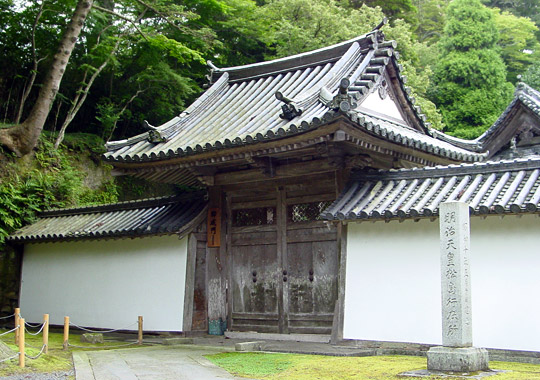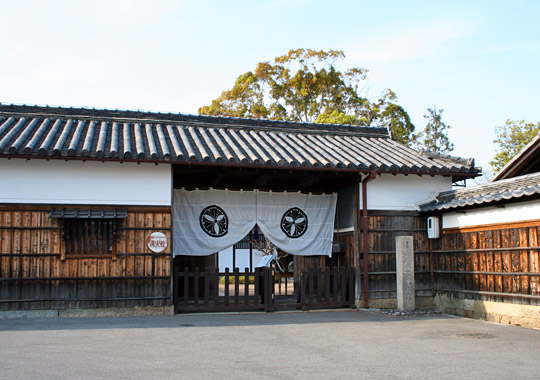| Gate.
Also read kado. A suffix which refers to a gate, of which there are
many types. Style: the structural style of gates may differ from wayou
style *wayou al, daibutsu
style *daibutsuyou
å§l, to Zen style *zenshuuyou
T@l, or gates which have a mixture of styles. Location: gates may also be
named according to their location, generally on the north, south, east,
and west sides of temple or shrine compound. Gates may also be placed on
the central axis of a temple compounds, or named for the hall or main image
in the hall in front of which it was erected. Use: since images are also
enshrined in some gates, the gate may take the name of the deity plus the
word, mon. Examples: *nioumon
ñ¤å; and Imperial messengers' gates *chokushimon
ºgå, found mainly at temples. The many gates around the Imperial capitals
have names that indicated restricted use for the emperor *miyukimon
äKå, and for a gate for the use of princes and regents, onarimon
ä¬å, was built at Zuiganji Þ (1604), Miyagi prefecture. Many other gates
are named for their use: gates in front of mausolea *byoumon
_å; gates used at aristocratic dwellings *omotemon
\å, gates at tea ceremony gardens *sudomon
âÅËå; gates with religious symbolism attached *sangedatsumon
OðEå; gates for dividing one part of a compound from another *shikirimon
dØå. Some gates are named for structural aspects such as the *kabukimon
¥Øå which uses a heavy horizontal beam *kabuki
¥Ø, placed between two posts. Another such gate is the *udegimon
rØå, so named because of a brace *udegi
rØ, placed at each end above the horizontal beam, extending far enough beyond
the main posts to carry the eave purlins *nokigeta
¬
. Gates for folk dwellings and for samurai are called nagayamon
ᨌ. |




